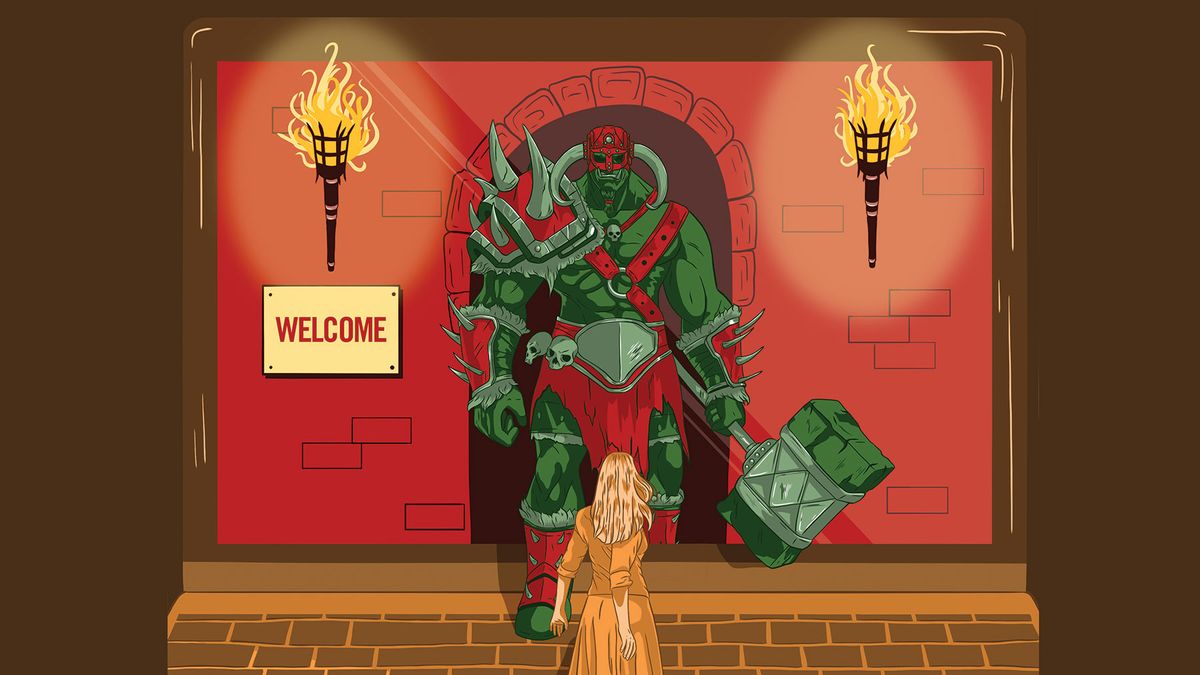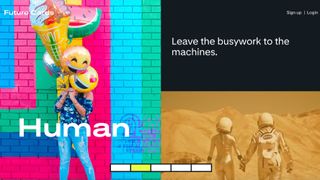Become a master of constructive confrontation
How to have uncomfortable conversations with colleagues and customers.

As designers, innovators and entrepreneurs, our mission is always to make people’s lives better. Our design thinking is typically pitched the same way: 'Hey, what you’re currently doing is painful; here’s an easier way'. So when Steve Selzer, a designer manager at Airbnb, suggested at SXSW that 'making things easier' isn’t always a good idea, I thought I'd misheard.
To make his point – that there are unintended consequences to removing all effort from every user experience – Selzer brought up WALL-E, a movie where all the humans are strapped to a motorised chair and eventually unable to see past a screen in front of them. In our world, our desire for everything to be instantaneously easy has caused us to shy away from facing anything tough. But challenges are how we grow. Selzer's solution is to design for confrontation; not only with our customers but our colleagues and even ourselves.

It was a powerful message, made even more powerful by what followed. Next up was a talk by the billionaire hedge fund manager Ray Dalio. He too focused on the importance of confrontation and the power of thoughtful disagreement.
After hearing both of these talks, I was fired up! I was ready to confront anyone! But as my adrenaline lowered, I remembered a challenging (and confrontational) audience question from Selzer’s talk: 'It’s easy for you to confront others. You’re the boss. You don’t have to worry about getting fired. What about the rest of us?'
A person’s success in life can usually be measured by the number of uncomfortable conversations he or she is willing to have.
Tim Ferris
And it’s true; both Selzer and Dalio are in positions of power. My doubts began to grow. Can only leaders design for confrontation? Then I started thinking about my own experiences. I realised that I’ve done this in small, less risky ways and that I could do it far more. I decided to list out what I’ve done to encourage confrontation, and what I’m still too afraid to try.
Here's my advice for tackling confrontation in a constructive way. If you’re skittish, start with the low-risk ideas. If you’re feeling bullish, swing for the fences and demand your organisation define its principles and challenge your customers.
While confrontation might seem like a scary stance for you to adopt, doing nothing may actually be riskier in the end. Not confronting the problems you see today can make those issues much worse in the future. And while this all might sound really difficult – that’s kind of the point. Just remember, as Tim Ferris says: “A person’s success in life can usually be measured by the number of uncomfortable conversations he or she is willing to have.”
Get the Creative Bloq Newsletter
Daily design news, reviews, how-tos and more, as picked by the editors.
Confront... yourself
Low risk: Confront your known weaknesses. Maybe – like me – you spend too much time on social media. Or maybe – like me – you’re not good at writing the copy for your interfaces. Fortunately, we can design systems to confront these weaknesses. For my social media addiction, I compartmentalise my devices. I use my iPad solely for reading articles and sketching and, when I’m working, I put my phone in my backpack.
To improve my copywriting skills, I force myself to use actual words in my sketches. You’d be surprised just how much the design improves when your words are more than just random squiggly lines.
Medium risk: Uncover unknown weaknesses. Here, we can take a page out of Dalio’s book, Principles, and write down every mistake we make. When I started working, I created a Google Doc titled 'Never Make These Mistakes Again' and I add to it every time I mess up. This process has revealed weaknesses I didn't know I had. I've also found a trusted co-worker to point out mistakes and help me avoid them in the future.
High risk: Confront your personal purpose. Research shows that the more passionate you are, the better your designs will be. The scary thing is that for most of us, our creative purpose doesn’t always match our organisation. Discerning your creative purpose is like opening Pandora's box. You might be happy where you are but if you find your organisation doesn't align with your purpose, you might want to start looking for something new.
Confront... your colleagues
Low risk: Create a confrontation plan. Good design processes encourage differing opinions but sometimes this leads to lingering tension. A clear process solves this. At my company, we 'pull the cord' in a methodology derived from Toyota's production process. Anyone can pull the cord to stop the project if they see a problem. Once the cord is pulled, everyone involved has to work out the issue together.
Medium risk: Hold regular retrospectives. Retrospectives are team meetings to talk about what’s going well and what could be better. Involving everyone is an easy way to confront an issue without confronting an individual.
High risk: Conduct what Airbnb calls 'real talk'. Every week, find time to talk to someone you've disagreed with. Doing this weekly means the event is fresh enough to remember the details but not so fresh that it's emotional. These conversations prevent conflicts from lingering and escalating.
Confront... your customers
Low risk: Tout best practices and good habits. Content marketing is a low-stakes way to confront your customers. My organisation does a great job of advising our customers not to use our products in ways that aren't in their best interest. This enables us to confront the issue while still giving our customers options.
Medium risk: Suggest they stop. It's one thing to write an article but it’s another to change your product or service for true confrontation. The only real experience I have here is pushing back on feature requests and requirements that I think are bad for our customers. However, Selzer suggests going further. Take for example, how Nintendo confronts gamers in Wii Sports. After a few hours of play, the game pauses with an image of an open window, asking 'Why not take a break?' There is no denying that confronting your customers is scary, but if you've got their best interests at heart, they'll respect you for it.
High risk: Define your purpose. The final and riskiest way to confront our customers is by clearly defining our organisation's purpose and principles. Today's world is more connected and politicised than ever before. As a result, many organisations are having to make tough choices. Dick’s Sporting Goods’ decision to stop selling assault rifles, Patagonia's decision to sue the White House and Delta’s $40 million decision to end its hardly-ever-used NRA discount are a few examples. While not all of us have to make such high-profile decisions, it's still crucial to define our organisation's principles so everyone's on the same page when these issues arise.
Lead illustration by Kym Winters.
This article was originally published in net, the world's best-selling magazine for web designers and developers. Buy issue 310 or subscribe.
Read more:

Thank you for reading 5 articles this month* Join now for unlimited access
Enjoy your first month for just £1 / $1 / €1
*Read 5 free articles per month without a subscription

Join now for unlimited access
Try first month for just £1 / $1 / €1




